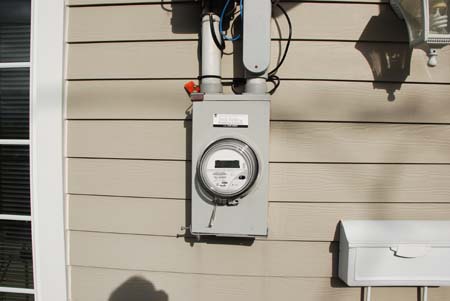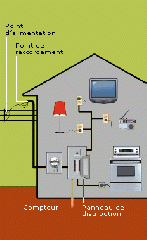Home > How It Works > Distribution > Electricity in the Home
Electricity in the Home
Electricity reaches the end of the road when it arrives at the home. From the generator where it was created, the electricity travelled at 735 000 volts over a distance of more than 1 000 kilometres, arriving in the home at voltages of 120 and 240 volts. Electricity enters the home through an electrical distribution panel equipped with a main breaker and circuit breakers or fuses. The quantity of energy consumed is measured by a meter located outdoors and connected directly to the power supply circuit breaker.
The main breaker serves to voluntarily cut power to the entire home. Circuit breakers or fuses, on the other hand, cut power voluntarily or automatically in the event of an overload. The electrical distribution panel is the start point of all circuits in the home. Circuits are conductors connected to each other that ensure the distribution of electricity within the home. Some appliances like refrigerators are powered by dedicated circuits. However, one circuit may serve to provide electricity to several small appliances such as toasters, computers or a series of lights. Appliances with powerful heating elements such as a stove, water heater or clothes dryer are fed by dedicated 240-volt circuits.







